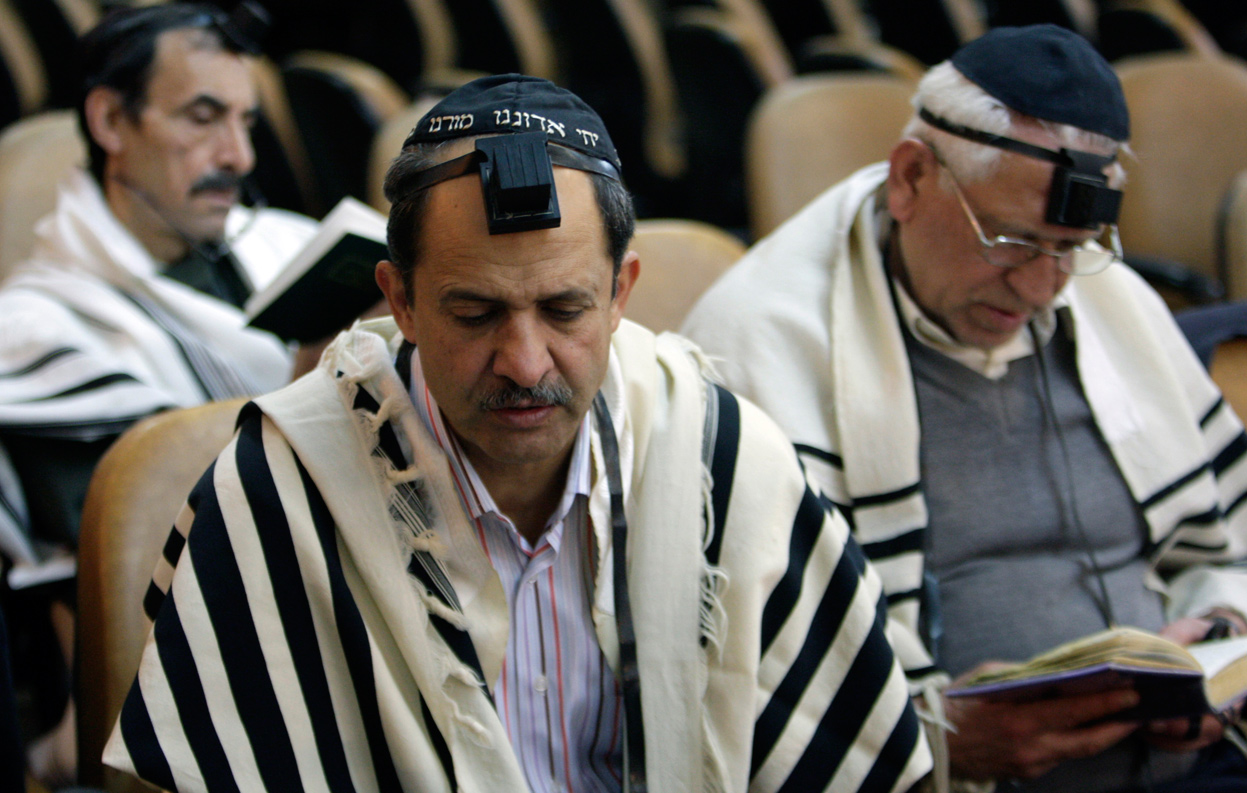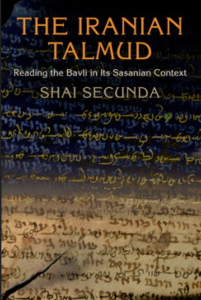The below article by Jacob Neusner was originally published in the Encyclopedia Iranica on July 20, 2005. As demonstrated by Neusner, the Persian influence on Judaism through the Babylonian Talmud (Bavli) is by no means negligible. The Bavli, as seen in his article below, is full of Iranian words and motifs.
Readers are also referred to the following text for further reference:
Author: Shai Secunda
Title: The Iranian Talmud: Reading the Bavli in Its Sasanian Context
Publisher: University of Pennsylvania Press (2013)
Order: University of Pennsylvania Press, Amazon.
======================================================
While the Jews of the Parthian and Sasanian empires spoke (eastern) Aramaic, not Middle Persian, Persian influence on Judaism through the Babylonian Talmud (Bavli) is by no means negligible. The Bavli is full of Iranian words and motifs, such as the resurrection of the dead and the last judgment, that are familiar in Zoroastrianism. The laws of purity set forth in the Pentateuch (Leviticus mainly) and in the Mishnah, the 2nd-century CE law code of Judaism, exhibit remarkable affinities with the Zoroastrian counterparts. The Mishnah and counterpart Zoroastrian law codes exhibit striking, formal correspondences, but there is no counterpart in Iranian law codes to the commentary of the Talmud to the Mishnah (Neusner, 1993). However, Iranian language, law, and culture made its impact on the Jews and on Judaism.
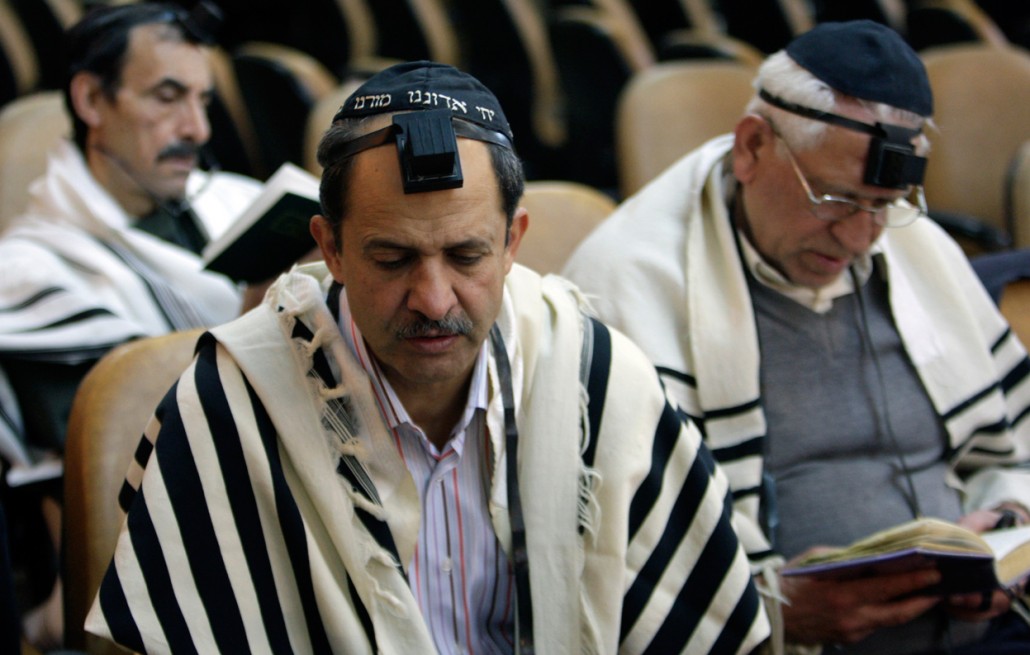 Iranian Jews praying during Hanukkah celebrations on Tuesday, December 27, 2011 at the Yousefabad Synagogue, in Tehran, Iran (Source: Wodu).
Iranian Jews praying during Hanukkah celebrations on Tuesday, December 27, 2011 at the Yousefabad Synagogue, in Tehran, Iran (Source: Wodu).
For nine centuries Babylonian Jews lived under Iranian rulers, Parthian, then Sasanian, from the middle of the 2nd century BCE to the 7th century CE. Other Jews lived in Mesopotamia (Dura Europos) and Nippur (whence the Jewish magical bowls), in Armenia, in Characene, in Khuzestan, and in Iran proper. But the Bavli represents principally Babylonian conditions, though making reference to Khuzestan. Babylonia had a diverse population, not made up mainly of an Iranian majority and a Jewish minority. In Babylonia lived various sorts of Semites—Tai Arabs, Mandaeans, Syrians, Babylonians—who spoke different dialects of Aramaic as well as Greek. There also were Armenians, Indians, Romans, and Chinese, in small numbers, in the commercial life of the Iranian-administered provinces, particularly in the imperial capital, Ctesiphon and its commercial neighbors, Selecta and Vologasia. The Jews were mostly farmers and artisans living in villages. Thus, Babylonia was a mosaic of peoples and cultures.
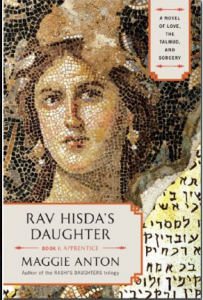 Maggie Anton‘s novel “Rav Hisda’s Daughter” (Published by Plume 2012 – order at Amazon). Anton’s novel narrates the story of the daughter of a Talmudic figure who lived in ancient Persia (Picture Source:The Unmasked Persona’s Review).
Maggie Anton‘s novel “Rav Hisda’s Daughter” (Published by Plume 2012 – order at Amazon). Anton’s novel narrates the story of the daughter of a Talmudic figure who lived in ancient Persia (Picture Source:The Unmasked Persona’s Review).
Being a military aristocracy, the Parthians made slight effort to Iranize the low country of present-day Iraq. The Sasanians, however, made a systematic effort to settle the rich lowlands between the two rivers, improving the standing of Zoroastrianism. From time to time they made an effort to impose Zoroastrianism on the territories; in Armenia these efforts went on for centuries.
The Babylonian Talmud is full of Iranian words. Rabbis could understand spoken Persian, we do not know what dialect, but could not read the written language. The original language of the passage that follows is Aramaic:
II. 11A. When to Rabbi Pappa would come a document written in Persian deriving from gentile archives, he would give it to two gentiles to read, not in the presence of one another, not telling them the purpose, and if their readings concurred, he would issue an order on the strength of the document to recover a debt even from property mortgaged after contracting the debt to a third party.
II. 12A. Said Rabbi Ashi, “Said to me Rabbi Huna bar Nathan, ‘This is what Amemar said: “As to a document in Persian on which Israelite witnesses signed, we collect on the strength of it even from mortgaged property.”
B. But lo, the Israelites can’t read it.
C. It’s a case of those who can read Persian.
D. But it has to involve writing that can’t be forged without leaving some sort of evidence, and in the case of Pahlavi documents, that consideration is not enforced!
E. It is one that has been treated with gall nuts.
F. Lo, we require that the final line of the document contain the gist of the contents of the document, and the Persian courts don’t impose that requirement!
(Bavli Gittin 19b)
Pappa could not read the language but could understand when it was read to him. There is no reason to suppose that the rabbis could read the Iranians’ holy books. But they did record disputations with Magi, although the following story does not yield profound knowledge of Zoroastrianism:
V. 16A. Said a magus to Amemar, “The part of you from the middle and above belongs to Hormiz, and the part of you from the middle and downward belongs to Ahormiz.”
He said to him, “If so, how can Ahormiz let Hormiz piss on the ground.”
(Bavli Sanhedrin 39a)
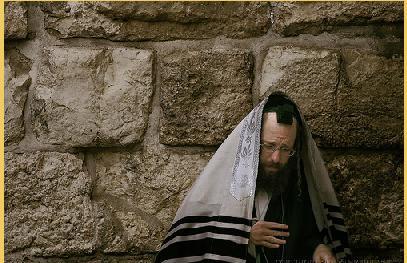 The West Wall in Jerusalem. After his conquest of Babylon, Cyrus allowed the Jewish captives to return to Israel and rebuild the Hebrew temple. It is believed that approximately 40,000 did permanently return to Israel (Photo source – see Blog).
The West Wall in Jerusalem. After his conquest of Babylon, Cyrus allowed the Jewish captives to return to Israel and rebuild the Hebrew temple. It is believed that approximately 40,000 did permanently return to Israel (Photo source – see Blog).
Reference is made to Iranian festivals, two of them being days on which taxes were paid:
V. 4A. These are all Roman festivals. What about the Persian ones?
B. They are Mutardi, Turyaskai, Muharnekai, Muharin.
C. These are the festivals of the Romans and the Persians. What about the Babylonian ones?
D. They are Muharnekai, Aknayata, Bahnani, and the tenth of Adar.
(Bavli Abodah Zarah 11b)
Mutardi refers to Nawsard; Turyaski, to Tiragān (13th of the 4th month); Muharnekai, to Mihragān; Muharin, to Nawruz (see Taqizadeh, pp. 632-39).
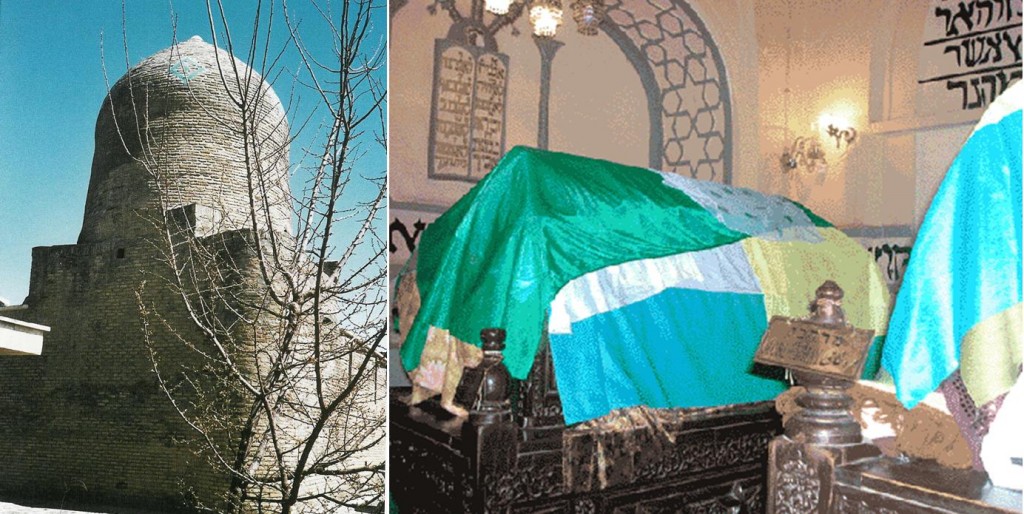 The tomb of Esther and Mordechai in Hamedan, northwest Iran. External view (left) and the interior of the tomb (right).
The tomb of Esther and Mordechai in Hamedan, northwest Iran. External view (left) and the interior of the tomb (right).
Some Jews adopted Iranian names and mastered Iranian military arts and wore Iranian garments:
I. 7A .Rabbi Ahi b. Rabbi Josiah had a silver cup in Nehardea. [14B] He said to Rabbi Dosetai b. Rabbi Yannai and to Rabbi Yosé bar Kippar, “When you come back from there, would you bring it with you?”
B. Then went and got it. They said to them, “Effect transfer of title” [so that you are responsible for the cup from this point forward, and we are not].
C. They said to them, “No.”
D. ”Then give it back to us.”
E. Rabbi Dosetai b. Rabbi Yannai said to them, “Yes,” but Rabbi Yosé b. Kippar said to them, “No.”
F. They were abusing him. He said to him, “Look, sir, what they are doing!”
G. He said to him, “Hit him again, hit him again, harder, harder.”
H. So when they got back to him, he said to him, “Look, sir, it wasn’t enough that he didn’t help us, but he even said to them, ‘Hit him again, hit him again, harder, harder’!”
I. He said to him, “Why did you do this?”
J. He said to him, “Those men are a cubit high, and their hats are a cubit high, and they took? from their bellies [in deep voices], and they have outlandish names, like Arda and Arta and Pili-Barish [Pahlavi: Arda/Arta = Sadoq, that is, Justified; Pili-Barish = Elephant-Rider]. If they give orders, ‘Tie him up,’ they tie him up. If they give orders, ‘Kill him,’ they kill him. So if they had killed Dosetai, who is going to give Yannai, my father, a son like me?”
K. He said to him, “Are these men close to the government?”
L. He said to him, “Yes. They have horses and mules in their retinue.”
M. He said to him, “If so, what you did was perfectly within your rights.”
(Bavli Gittin 14a-b)
The tomb of Daniel in Khuzestan in southwest Iran. The main structure (note cone-like dome) as it stands today (left) and Iranian pilgrims paying homage within the tomb of Daniel.
An Arta the Scribe is known from the Dura synagogue graffiti as well, not to mention an Arsaces in addition to an Abraham. The reference to Jews wearing high hats (“as tall as themselves”) calls to mind the pointed cap or hood brought by the Iranians from the Siberian steppes. The Babylonian Talmud (Bavli Horayot 13b) refers to a Jewish authority from Babylonia who wore the kamara, sash, which signified authority in the Kerdīr inscription. The context of the several stories suggests that Jews wore Iranian garments, which were outlandish in the eyes of the Palestinian counterparts. The Talmudic rabbis do not seem to have known much about Iranian religion and culture, and the contrary was also the case. While one may locate in Rabbinic literature motifs and images familiar in Iranian religions, the resurrection of the dead and last judgment being a principal borrowing, one cannot support that the authorities who included them saw them as Iranian. On the contrary, they went to great efforts to prove that resurrection of the dead and last judgment derived from the ancient Israelite scriptures. So the rabbis of the Talmud knew those aspects of Iranian culture, law, and religion that impinged on the practical affairs of the Jewish community. The only matters of Iranian law that interested them had to do with taxes and real estate transactions, laws they had to enforce in their own courts. The Middle East was divided into three cultural units: (1) Hellenistic-Roman, (2) Iranian, and (3) the world of Semites, Armenians, and other smaller groups. It was to that complex third world, the Semitic, Aramaic-speaking part of it, that the rabbis of the Talmud belonged.
Bibliography:
Bernhard Geiger, “The Synagogue. Middle Iranian Texts,” in The Excavations at Dura-Europos. Final Report VIII, Part I:The Synagogue, ed. Carl H. Kraeling et al., New Haven, 1956, pp. 283-317.
A. Kohut, “Les fêtes persanes et babyloniennes dans les Talmuds de Babylon et de Jérusalem,” Revue des études juives 24, 1892, pp. 256-71.
Jacob Neusner, “How Much Iranian in Jewish Babylonia,” JAOS 92, 1975, pp. 184-90.
Idem, Judaism and Zoroastrianism at the Dusk of Late Antiquity. How two Ancient Faiths Wrote down their Great Traditions, Atlanta, 1993.
J. Neusner et al., eds., The Talmud of Babylonia: An American Translation, Chico, Calif, then Atlanta, 1984-95.
Seyyed Hasan Taqizadeh, “The Iranian Festivals Adopted by the Christians and Condemned by the Jews,” BSOAS 10, 1940-41, pp. 632-53.
Sigismond Telegdi, “Essai sur la phonétique des emprunts iraniens en araméen,”JA 226, 1935, pp. 177-257.

